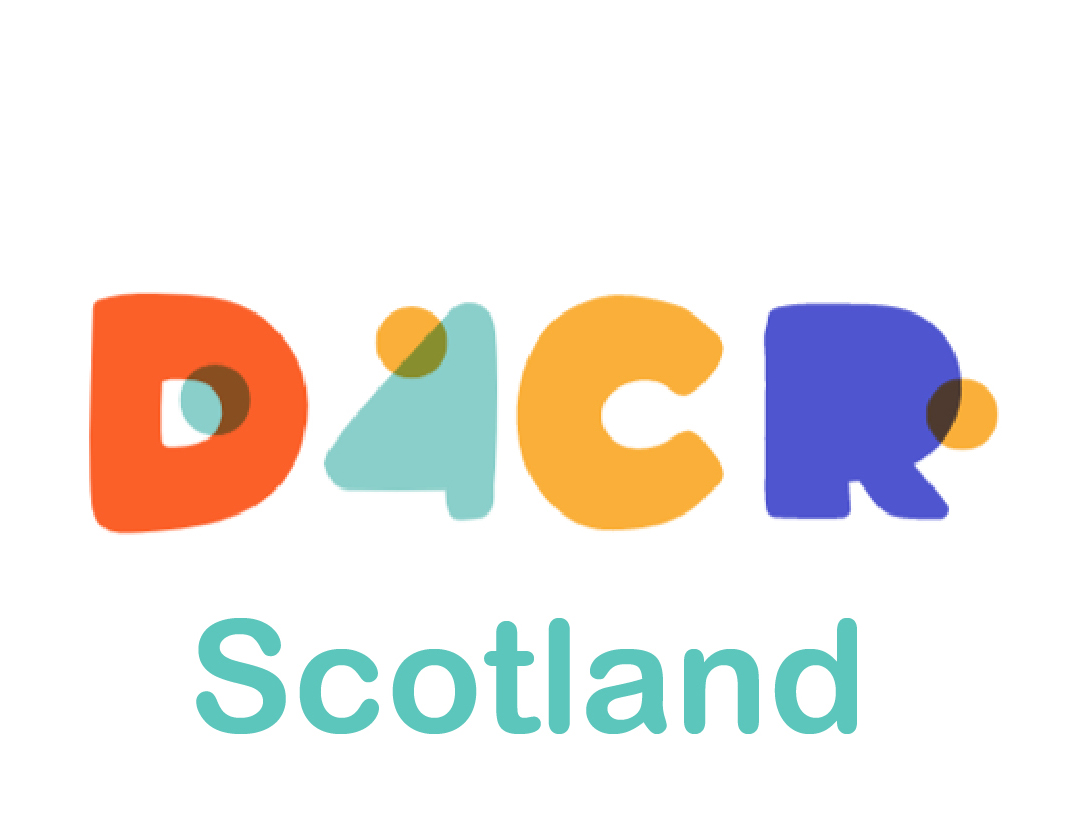Tell Me 2 告诉我 2
An online exhibition where children tell about themselves and the world through clothing
A series of workshops where children learn about themselves and others in clothing
⼀个孩⼦们讲述关于⾐服故事的线上展览
这是⼀系列孩⼦们通过服装了解他们⾃⼰,了解更⼤的世界的⼯作坊课程。
| Pioneering the impact and importance played by clothing in school, “Tell me” is also featured in the exhibition “Dressed for school” at the National Museum of Education (Rouen, France) from 10th June 2023 to 31st March 2024 https://www.reseau-canope.fr/musee/fr/connaitre/les-expositions/exposition/shabiller-pour-lecole.html . Curious visitors will be able to find out more in the edited paperback and e-book (co-curators: Aude Le Guennec and Nicolas Coutant, publisher Canopé) https://www.reseau-canope.fr/musee/nl/connaitre/les-expositions/exposition/shabiller-pour-lecole.html |



This is the first project with children, developed under the Scottish and French Local chapters of D4CR within the framework of the network IN2FROCC (Children and clothing). From the visual analysis of what children are wearing and how they define themselves through their clothes, the “Clothing pals” from schools around the world share their everyday life in clothing. The focus on children’s responses contributes to our understanding of children’s interactions with clothing and fashion.
简介:
该项⽬由 IN2FROCC⼉童与服装协会下的 D4CR 苏格兰和法国地⽅分会研究发展。来⾃世界各地的孩⼦通过分享他们的⽇常穿搭 “以⾐会友”,⽽我们通过视觉分析研 究孩⼦的穿着需求以及他们⾃我如何在时尚领域中定义⾃⼰,来了解⼉童对于服装的 想法和他们对于时尚的认知。


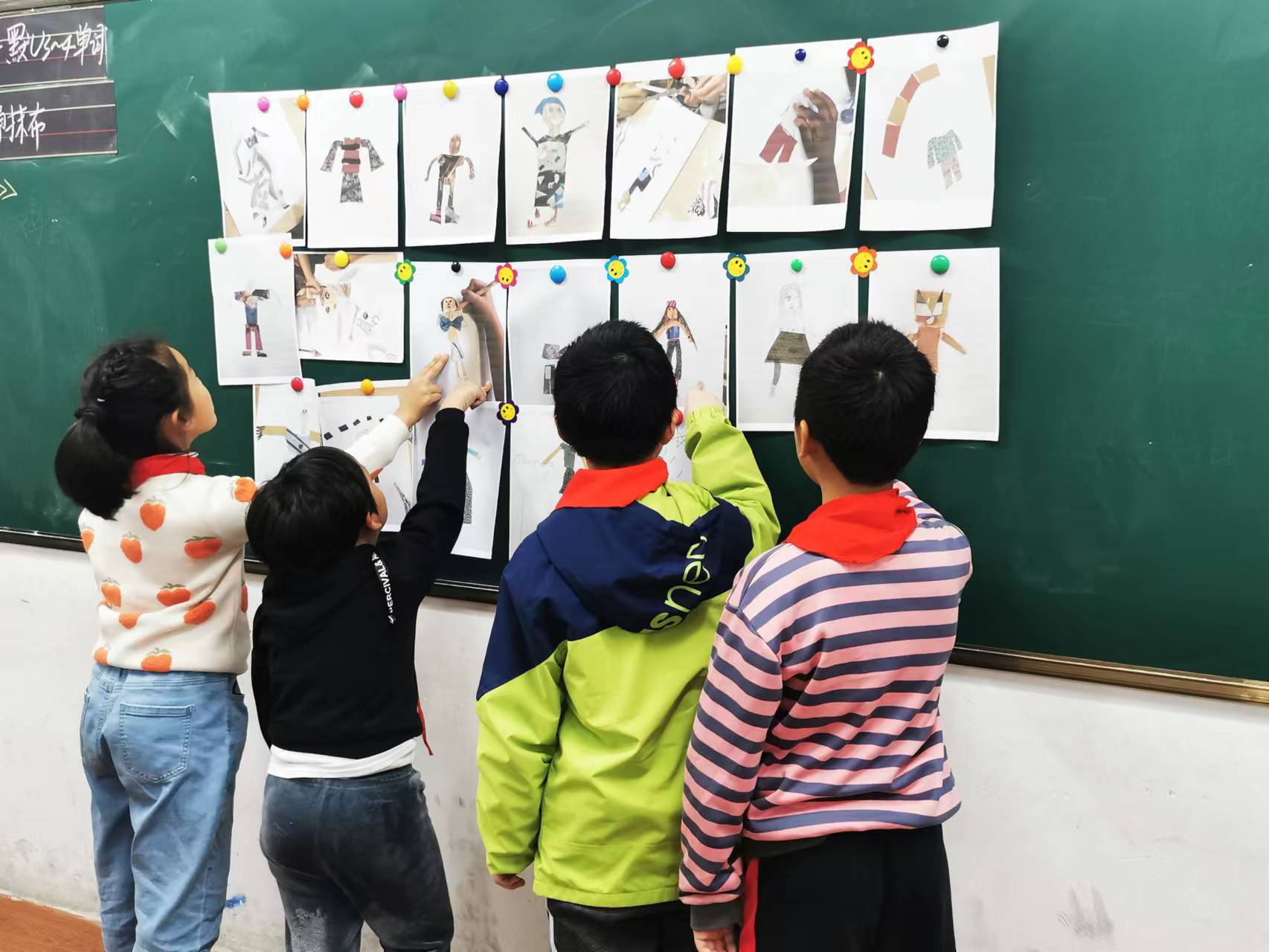

“Tell me 2” creates a link between children from the suburbs of Paris (France) and the city of Wuxi in eastern China. This online exhibition presents the outcome of this exchange between two groups of school children aged 8 to 9, from October to December 2022. Following a child-led approach, this pilot project pursues the cultural dialogue started with “Tell me 1”, using clothing as a medium. This time, the children become a driving force in the forms taken by the exchange between the “Clothing Pals”.
该项⽬作为“Tell me 1”的延续,仍旧使⽤以孩⼦意愿为主导的研究⽅法,将服装作为 媒介进⾏⽂化交流。 “Tell me 2” 将法国巴黎郊区和位于中国东部⽆锡市的孩⼦们聚 集到⼀起。该线上展览包含了 2022 年10⽉⾄12⽉间,法国及中国两组 8 ⾄ 9 岁学 龄⼉童之间交流的结果。
Clothing Pals – 以衣会友
Facilitators (France): Anne-Charlotte Hartmann-Bragard, Jeanne Callegari
Facilitators (China): Liying Gu, Xiang Li
⼯作坊协调员:
法国:Anne-Charlotte Hartmann-Bragard(安妮-夏洛特·哈特曼-布拉加德) ;
Jeanne Callegari (珍妮·卡莱加⾥)
中国:顾黎英,李想

The TELL ME methodology in pictures (Illustration credit: Aurélien Bertry)
Click on the picture to enlarge. An English translation is available as well.
Context/localisation:
Pantin, Paris suburbs, Sadi-Carnot elementary school, CE2 class (teacher Jeanne)
Participants: 25 children
Wuxi, Eastern China, Wuxi Garden Primary School, 3rd grade (Liying teacher)
Participants: 39 children
参与学校:
庞坦,巴黎郊区,Sadi-Carnot⼩学,CE2班(珍妮⽼师)
⽆锡,华东地区,⽆锡花园实验⼩学,3年(4)班(顾黎英⽼师)
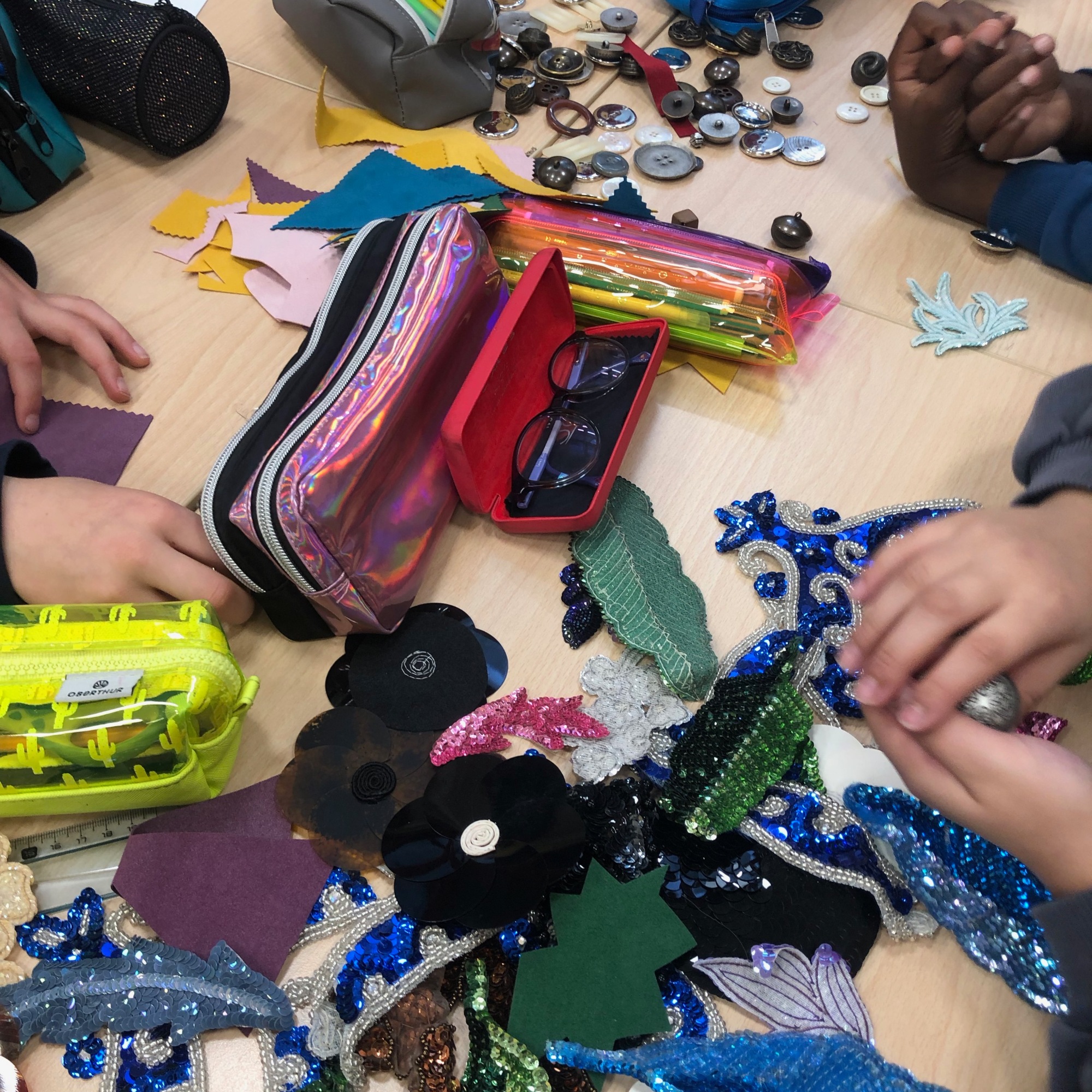







Following the reflections and discussions of the pupils, the workshops in France and China respond to each other. This mirroring allows the links to be forged and the stories imagined by the children to develop.
法国和中国的⼯作坊课程随着孩⼦们互相提问回答、反馈和商讨,不停地迭代发 展。 这种有来有回、遥相呼应的课程形式可以加强孩⼦们间的联系并且锻炼孩⼦们 讲述故事的能⼒。
About the results – 创作成果
Note: The children in China were able to continue working at home and therefore were able to benefit from more time to develop their creations.
注:中国的孩⼦们将画作以家庭作业的形式带回家继续创作,所以他们⽐法国学⽣有更充裕的创作时间。
Workshop 1 – “Who am I?”: introducing each other’s to the “Clothing Pals”
⼯作坊课程1 – “我是谁?”:⼩朋友们以⾐会友,跟对⽅介绍⼀下⾃⼰吧~
Dates: 18th October 2022 (Pantin) / 21st October 2022 (Wuxi)
| The story: The pupils from France and China meet each other. Looking at the map, they locate their cities and schools. They think about the way they can introduce themselves to their “Clothing pals” by describing their daily wear, their school uniforms and their favorite clothes for specific weather and occasions. |
Ambiance : perplexity, curiosity, excitement
Medium : Self-portrait, drawing on paper, collages from wasted cloths
| 课程⽇期:2022 年10⽉18⽇(庞坦)/ 2022 年10⽉21⽇(⽆锡) 课程故事:法国和中国的学⽣互相认识了对⽅。 看着地图,他们找到了对⽅所在的 城市和学校。孩⼦们开动脑筋认真思考如何通过描述⾃⼰的⽇常着装、校服和在特别 场合的最爱穿搭来向他们的“服装伙伴”介绍⾃⼰。 氛围:困惑、好奇、兴奋 创作媒介:⾃画像、纸上绘画、废布拼贴。 |
“We live in a city with green mountains, beautiful peach blossoms, lots of willow trees and Lake Tai. In spring, birds sing and flowers smell great; In summer, the weather is burning hot; In autumn, we can see fruits on the trees; In winter, we sometimes have bad snowy days.”
Students at Wuxi Garden Elementary School, China
“我们⽣活的环境⼭清⽔秀,桃红柳绿。春天的时候鸟语花⾹,夏天的时候烈⽇当
无锡花园小学的学生,中国
头,秋天的时候果实累累,冬天的时候鹅⽑⼤雪。”
“Do you sometimes dress-up?
Pupils from Sadi-Carnot elementary school, France
- Yes, for the start of the school year, for the class photo, for parties, birthdays, when we go to a restaurant, to church, when we have guests at home, when we go to a concert, when we go to a wedding or a christening or when we go to a camp. And also for a funeral.
- You don’t dress well at a funeral, you dress in black!“
“你们有时候会打扮⾃⼰吗?”
Sadi-Carnot小学的学生, 法国
- “必须会呀!在学年开始时、班级合影时、聚会时、⽣⽇时、当我们去餐厅时去教堂时、家⾥有客⼈时、我们去⾳乐会时、我们参加婚礼时或者当我们去野营时。 还有参加葬礼时。”
- “你不能在参加葬礼时打扮⾃⼰,你该穿⿊色的衣服。”
Click here to discover all of the children’s self-portraits.
点击此处查看孩⼦们创作的所有⾃画像
A selection of self-portraits of French children
来自法国学生的部分自画像作品




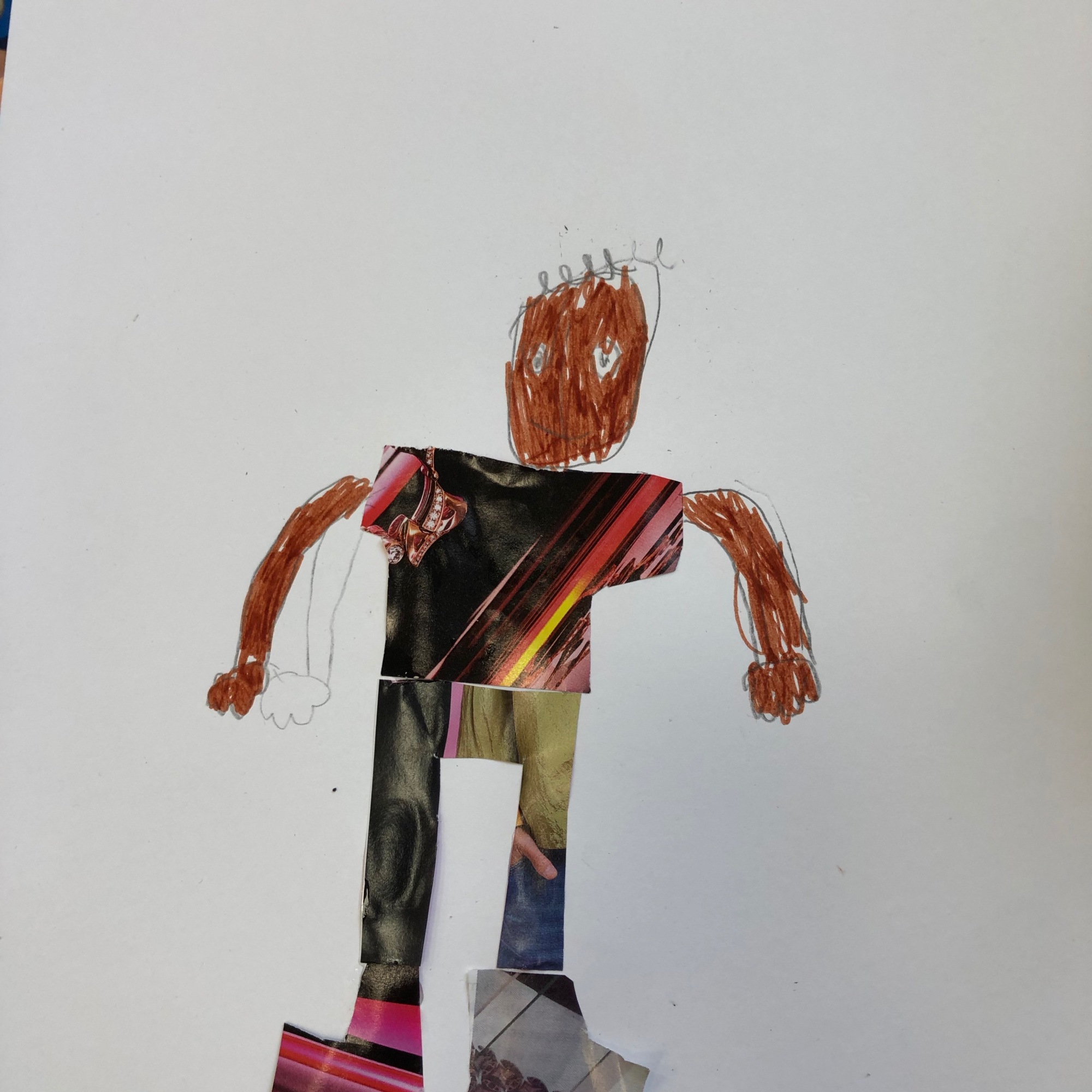



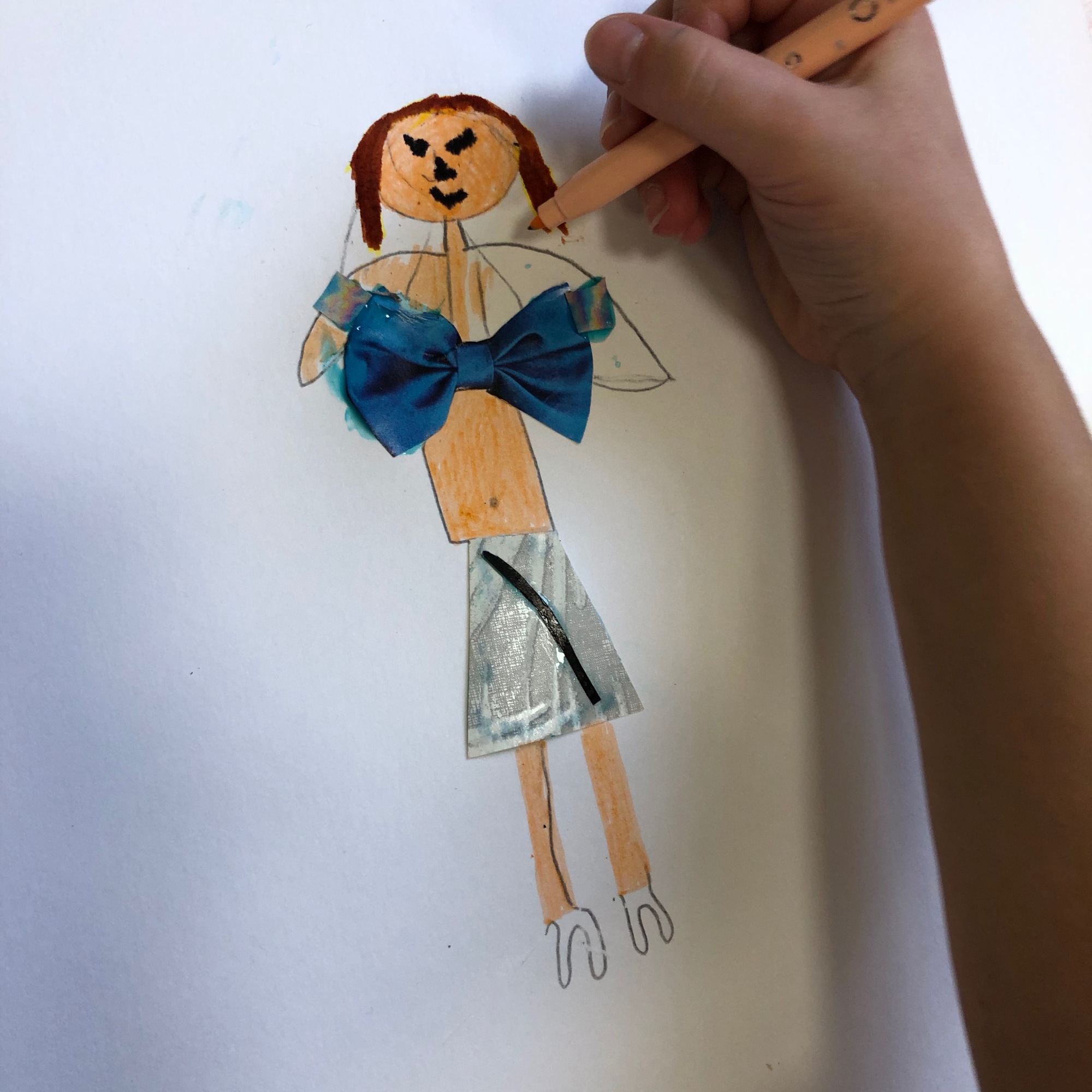
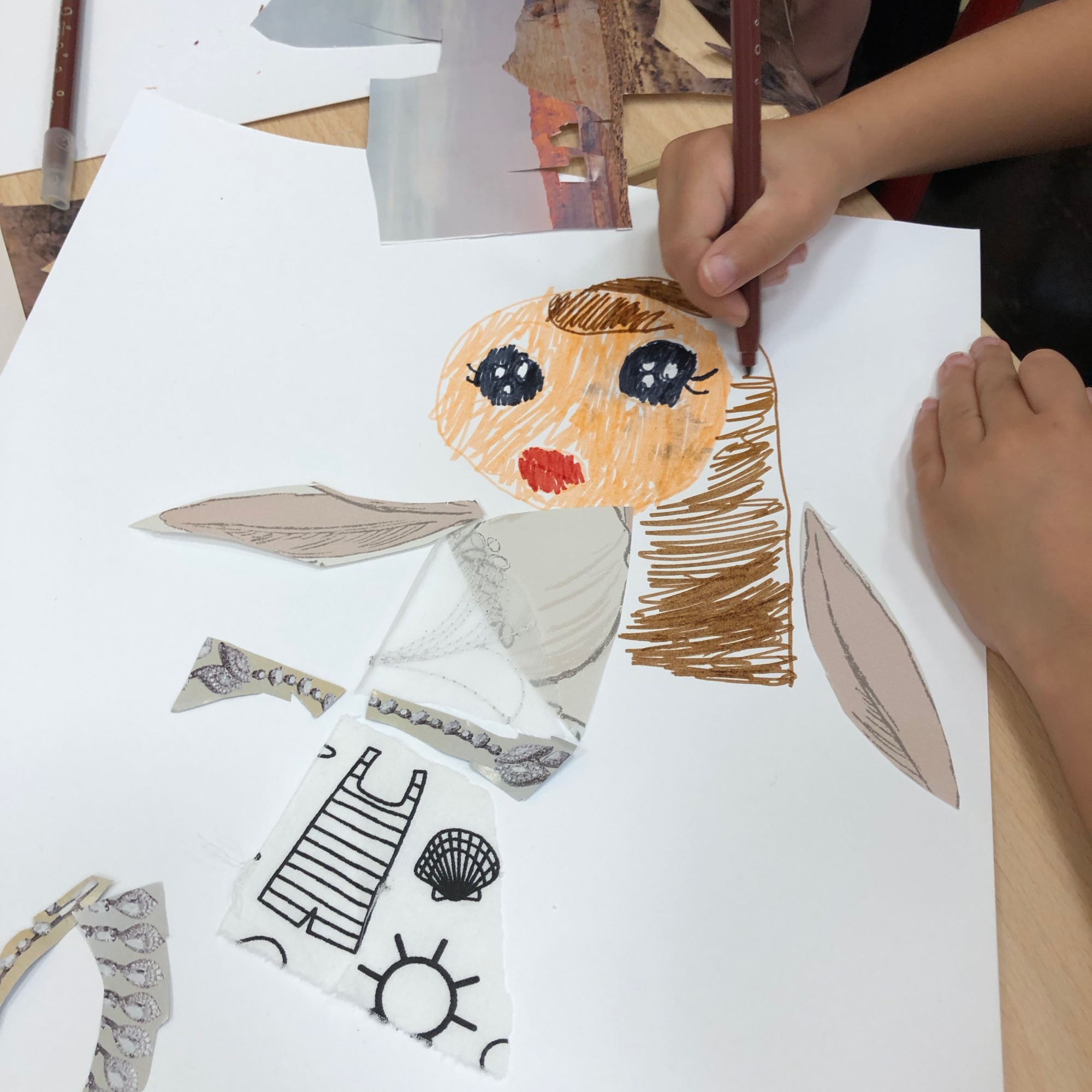
A selection of Chinese children’s self-portraits
来自中国学生的部分自画像作品









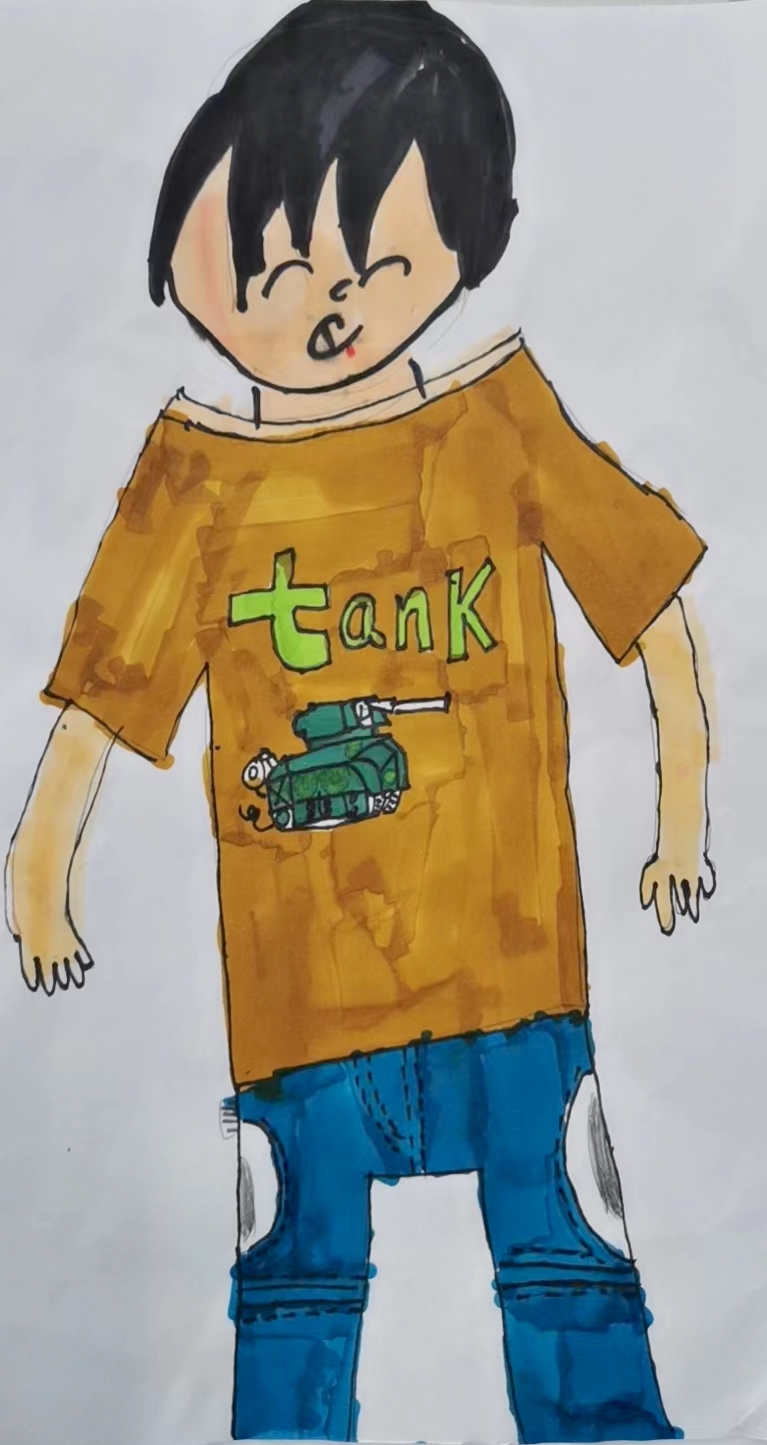
What children teach us: The clothes we wear say who we are and reflect the environment in which we live.
孩子告诉我们:我们所穿的⾐服代表了我们是谁,反映了我们⽣活的环境。
Workshop 2 – Who are you? Getting to know each other’s culture through clothing.
⼯作坊课程2 – 你是谁? 通过服装了解彼此的⽂化。
Date : November 10, 2022 (Pantin) / November 18, 2022 (Wuxi)
| The story: What do children wear everyday? What are their favorite clothes for different occasions and are there any traditional clothes related to their culture and background where they are? Using clothes as a medium, children learned about each other’s culture, the geography and climate.They also investigated what children do at school, their after-school activities, and holiday plans. In China, this led to a discussion about children’s own culture and a self-reflection on their dress codes and traditional dresses as children coming from a variety of cultures and backgrounds. In France, children have embarked on a collective brainstorming to define what a French costume could be. There were the groups: top, bottom, colours, accessories, patterns. |
Ambiance : Imagination, amazement, talkative
Medium : Creation from textiles, cloths and accessories, collages
Creative themes :
France: Reflection and creation of a French costume for everyone that would bring together all the symbols and values of France by integrating the richness of the multicultural origins of the children in the class.
China:
Topic 1: What are your special clothes, the ones that define yourself and your culture? Choose one element from accessories, hairwear, top, bottom and patterns to draw.
Topic2: What clothes will you choose to wear for specific activities or occasions?
| 课程⽇期:2022年11⽉10⽇(庞坦)/ 2022年11⽉18⽇(⽆锡) 课程故事:孩⼦们每天都会穿什么⾐服呢? 他们在不同场合最喜欢什么服饰?有没 有与他们所在地区的⽂化背景相关的传统服装? 以⾐服为教学媒介,孩⼦们间接地了解了彼此的⽂化、地理和⽓候。孩⼦们还兴致勃勃地讨论了彼此的校园⽣活、课后活动和假期计划。 以上种种引发了他们对于⾃⼰⽂化的讨论,以及来⾃不同⽂化背景的孩⼦对他们所属⽂化下着装要求和传统服饰的深度思考。 这激发了中国孩⼦对于⾃身⽂化的兴趣,并且引发了对不同⺠族⽂化背景的⼉童的着装规范和传统服饰的思考。 在法国,孩⼦们集思⼴益,他们分为上⾐组、下装组、颜⾊组、配饰组和图案组来定义法式服装。 氛围:想象⼒丰富、充满惊喜、侃侃⽽谈 创作媒介:利⽤纺织品进⾏创作、布料和配饰、拼贴画 创作题⽬: 法国:通过将班级学⽣们多元的⽂化背景融合,反思和创造适合所有⼈的法式服装将所有有关法国的象征和价值观结合到了⼀起。 中国: 题⽬1:你对于代表我们民族⽂化的传统服饰了解多少?你可以画出相关的⾸饰、上 ⾐、下⾐、发饰或者图案吗? 题⽬2:你们在特别的场合、节⽇中、活动上会穿着什么样⼦的⾐服? |
« Is there a difference between girls and boys in their uniforms?”
Pupils from Sadi-Carnot elementary school, France
“⼥⽣和男⽣穿制服有区别吗?”
Sadi-Carnot小学的学生, 法国
« What’s the style and colour of the French school uniform? Are they similar to our school uniforms? »
“I put on Hanfu if I go for a wedding or a party because I want to look different than other people.”
Students at Wuxi Garden Elementary School, China
“法国校服的款式和颜⾊是什么样⼦的呀? 它们和我们的校服相似吗?”
“我喜欢穿汉服去参加婚礼或派对,因为我想让⾃⼰看起来与众不同。”
无锡花园小学的学生,中国
“When I told them that the Chinese children were happy about this project because it was rare for them to be in contact with children from the other side of the world, we went round the class to find out if the French children knew other children from other countries. From their answers, we realised that they travelled and/or had family in other countries: Morocco, Romania, Algeria, Congo, Canada, Italy, the Netherlands, Senegal, Mali, Spain, Colombia, Turkey, Egypt.”
Anne-Charlotte Hartmann, facilitator, France
“我告诉法国学⽣中国孩⼦对于可以参加这次的课程感到⼗分兴奋,因为他们和世界
安妮-夏洛特·哈特曼-布拉加德,协调员,法国
另⼀端的孩⼦直接沟通的机会不常有。我询问法国孩⼦们是否认识其他国家的孩⼦。
从他们的回答中,我们发现他们曾在其他国家旅⾏过/或有家⼈:摩洛哥、罗马尼
亚、阿尔及利亚、刚果、加拿⼤、意⼤利、荷兰、塞内加尔、马⾥、西班⽛、哥伦⽐亚、⼟⽿其、埃及。”
“ There were only ten minutes left after Liying Gu announced the drawing topics. The pupils moved their tables, gathered into a circle quickly and discussed the themes they would like to choose. Some pupils said they would draw both. They also viewed each other’s materials. Some children swapped their fabrics, lace, buttons and ‘diamonds (sequins).”
Students at Wuxi Garden Elementary School, China
“顾黎英⽼师公布完绘画题⽬后,离下课只剩下⼗分钟了。 同学们挪动桌⼦,迅速围
无锡花园小学的学生,中国
成⼀圈,讨论着⾃⼰想选的绘画主题。 ⼀些学⽣说他们两个题⽬都想画。 他们还互
相分享了彼此所带的绘画材料, ⼀些孩⼦交换了他们的布料、花边、纽扣和‘钻⽯’(亮⽚)。”
Click here to discover all of the children’s drawings/creations.
点击此处查看孩⼦们创作的所有⾃画像
A selection of drawings/creations by French children (search for patterns, colors, materials)
法国⼉童绘画创作部分作品(寻找图案、颜⾊、材料)



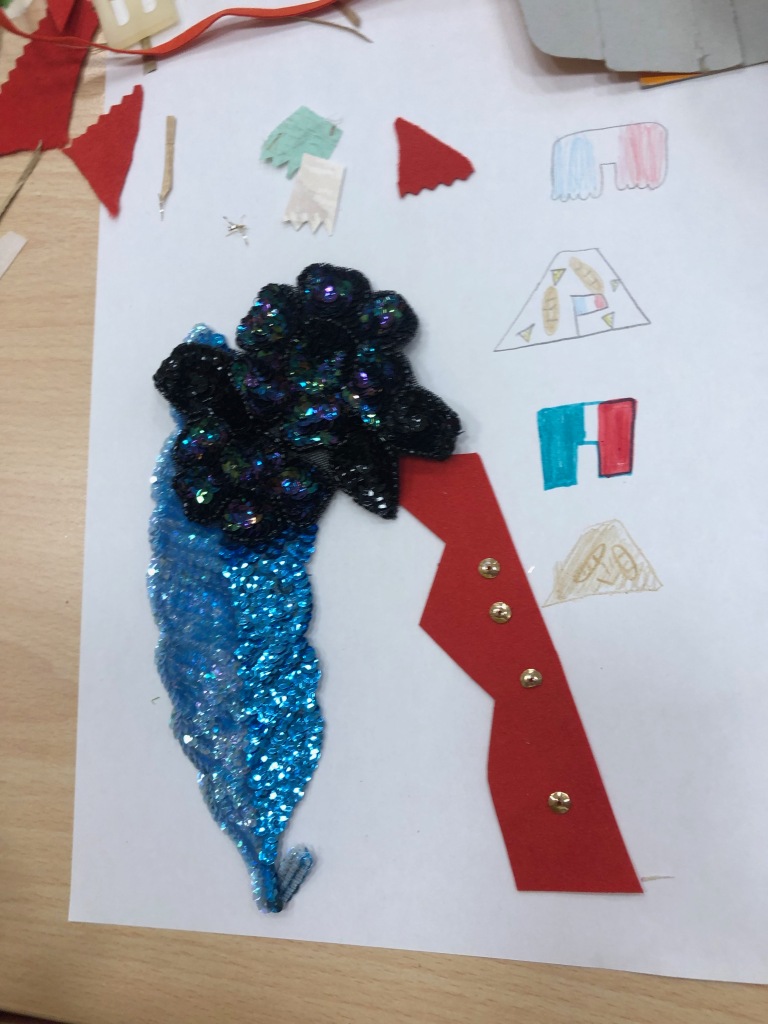


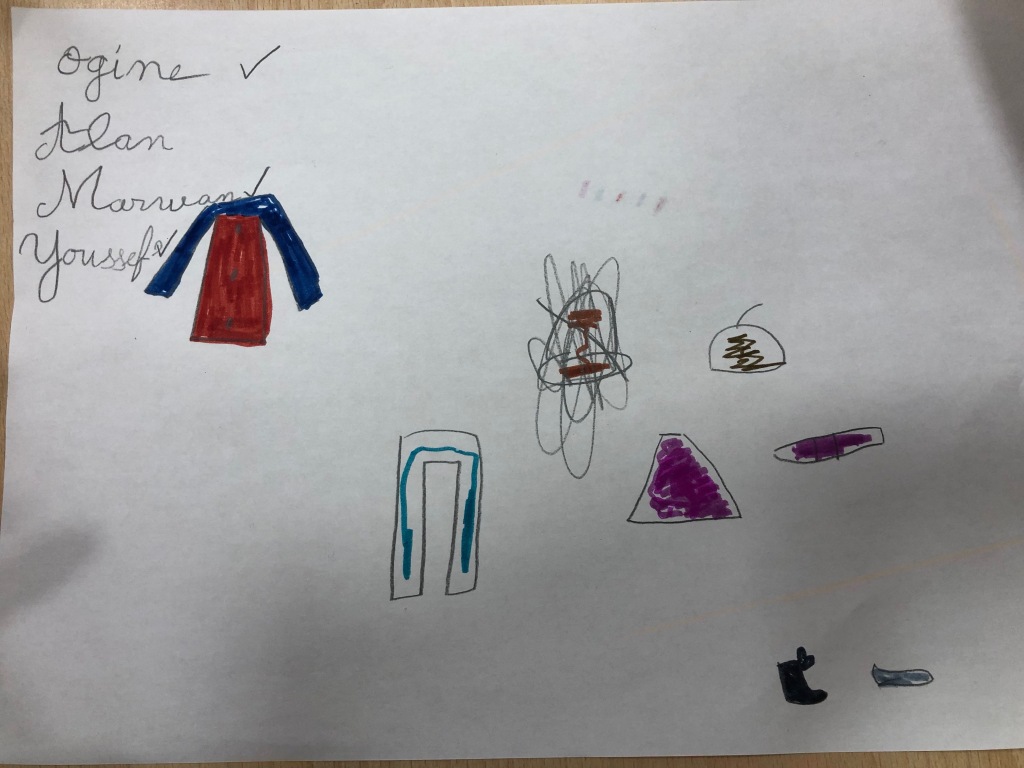

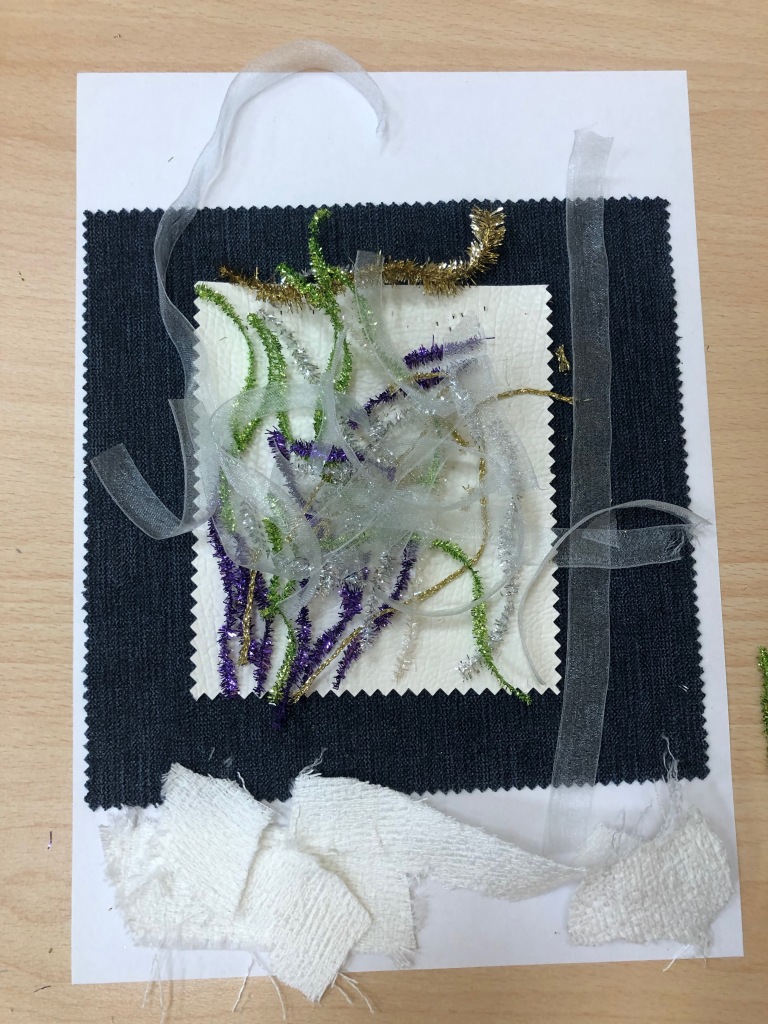
Topic 1 – Traditional Chinese/Hanfu Clothing (Miao, Bai and Manchu Ethnic Group)
题目1- 中国的传统服饰/汉服
A selection of Chinese children’s self-portraits
来自中国学生的部分自画像作品




Theme 2 – Clothing for specific activities or occasions
题目2 – 在特别的场合、节⽇中、活动上,你会穿着怎样的⾐服?
A selection of Chinese children’s self-portraits
来自中国学生的部分自画像作品







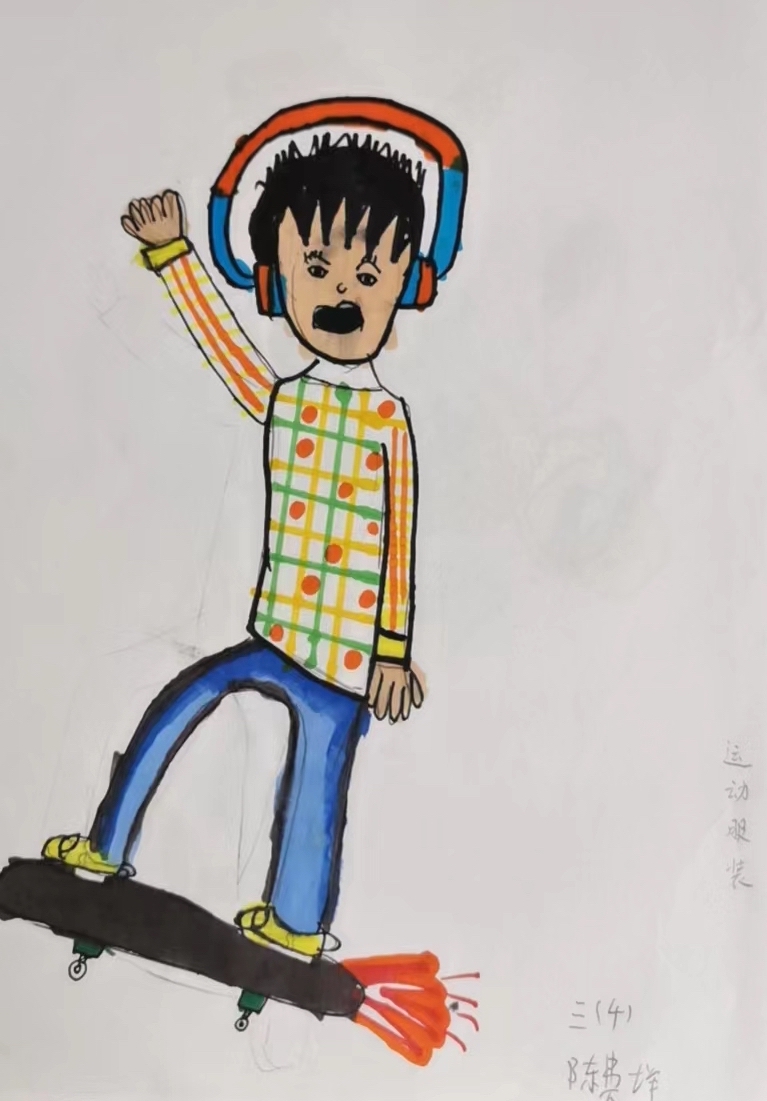
What children teach us: clothing is a medium of inter-cultural exchanges.
孩子告诉我们:服装是跨⽂化交流的媒介。
Workshop 3 – If I was meeting my friends… Dressing up!
⼯作坊课程3 – 如果我马上要和“服装伙伴”见⾯… 打扮起来吧!
Date : December 12, 2022 (Pantin) / December 16, 2022 (Wuxi)
| The story: The children progressed in their discussions about each other’s daily lives, including aspects from school life, favorite local food, and preferred games. French children spent time thinking about the traditional clothes in China, which were drawn by their “Clothing Pals”. Chinese children spent time thinking about Paris as the capital of fashion.Observing each other’s creations with amazement, they imagined what they would wear if they were invited to meet for the launch of an exhibition in France. What would I pack in my suitcase? |
Ambiance : profusion, imagination, doesn’t want to end
Medium : drawing, collage
Creative themes :
Topic 1 – Dressed for the exhibition
Topic 2 – My ideal suitcase
| 课程⽇期:2022年12⽉12⽇(庞坦)/ 2022年12⽉16⽇(⽆锡) 课程故事:孩⼦们进⼀步讨论了彼此的学校⽣活、互相最喜欢的特产⾷物和喜爱的游戏等。接着,法国孩⼦们欣赏、学习了由他们“服装伙伴”中国学⽣绘制的中国传统服饰。 中国孩⼦则同样欣赏了法国孩⼦们绘制的服装并赞赏到巴黎不愧为时尚之都 啊!双⽅的孩⼦惊奇地观察着彼此的作品,想象着如果有⼀天他们同被邀请去法国参加⼀个展览的开幕式,她们会穿什么?又会在旅⾏箱⾥带什么呢? 氛围:天马⾏空、充满想象⼒、根本不想结束 创作媒介:绘画、拼贴画 创作题⽬: 题⽬1:你会穿着什么样的⾐服和你的法国同学⼀起参加绘画展览呢? 题⽬2:我的法国参展之旅⾏李箱 |
“His drawing has so many details of Hanfu. The hairstyle he drew is for ancient children. He also drew Huadian on his forehead.”
Students at Wuxi Garden Elementary School, China
“他的画展示了很多汉服的细节。 画中的发型是为中国古代孩⼦梳的发髻。 他还额头上画上了花钿。”
无锡花园小学的学生,中国
“In the end, the red Beret drawn by Olivia got the most likes.”
Pupils from Sadi-Carnot elementary school, France
“Olivia画的红⾊⻉雷帽获得了最多中国孩⼦的喜爱。”
Sadi-Carnot小学的学生, 法国
Click here to discover all of the children’s self-portraits.
点击此处查看孩⼦们创作的所有⾃画像
Theme 1 – Dressed for the exhibition
题⽬1 – 你会穿着什么⾐服和法国同学⼀起参加绘画展览呢?
A selection of self-portraits of French children
来自法国学生的部分自画像作品





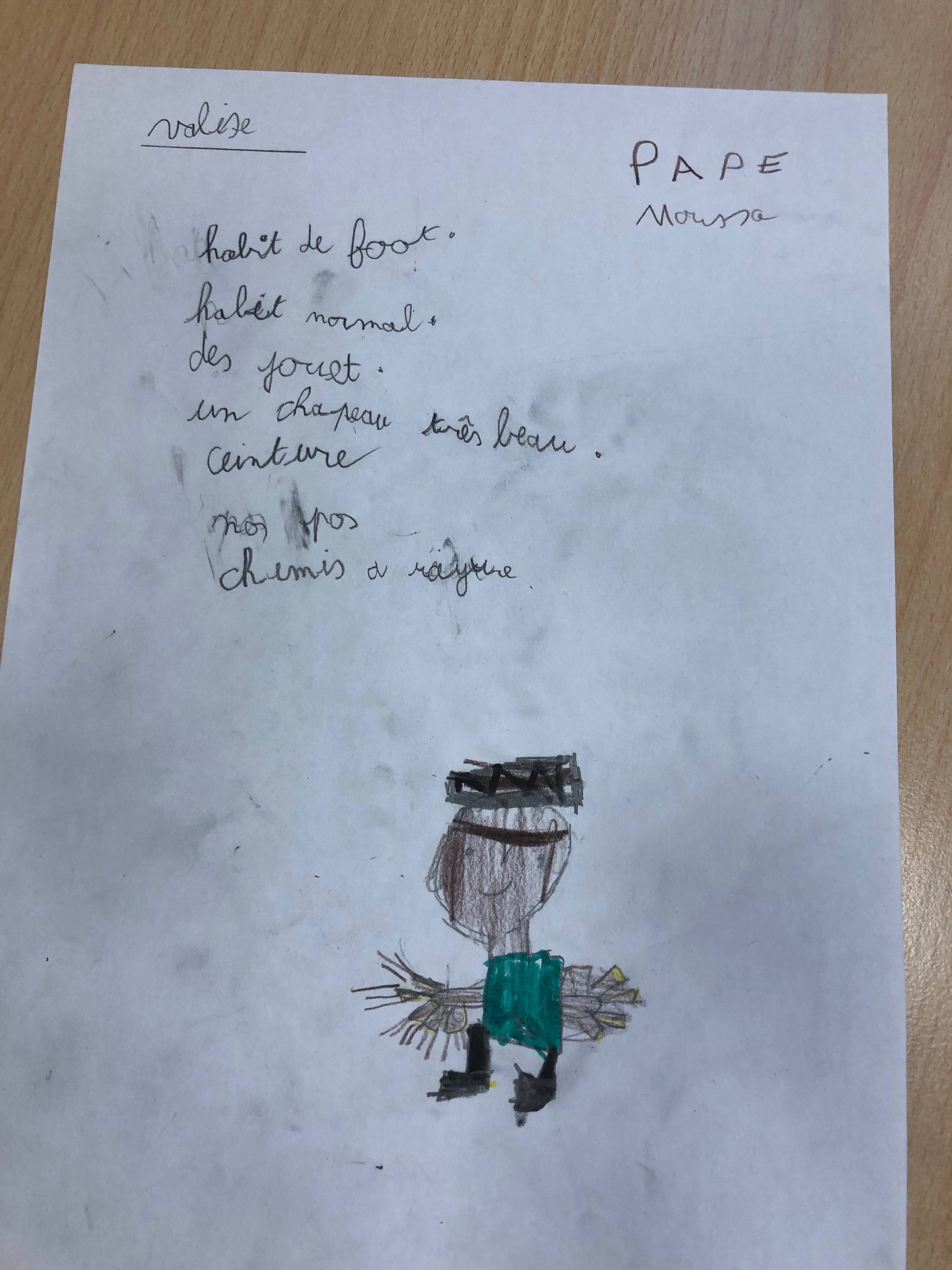
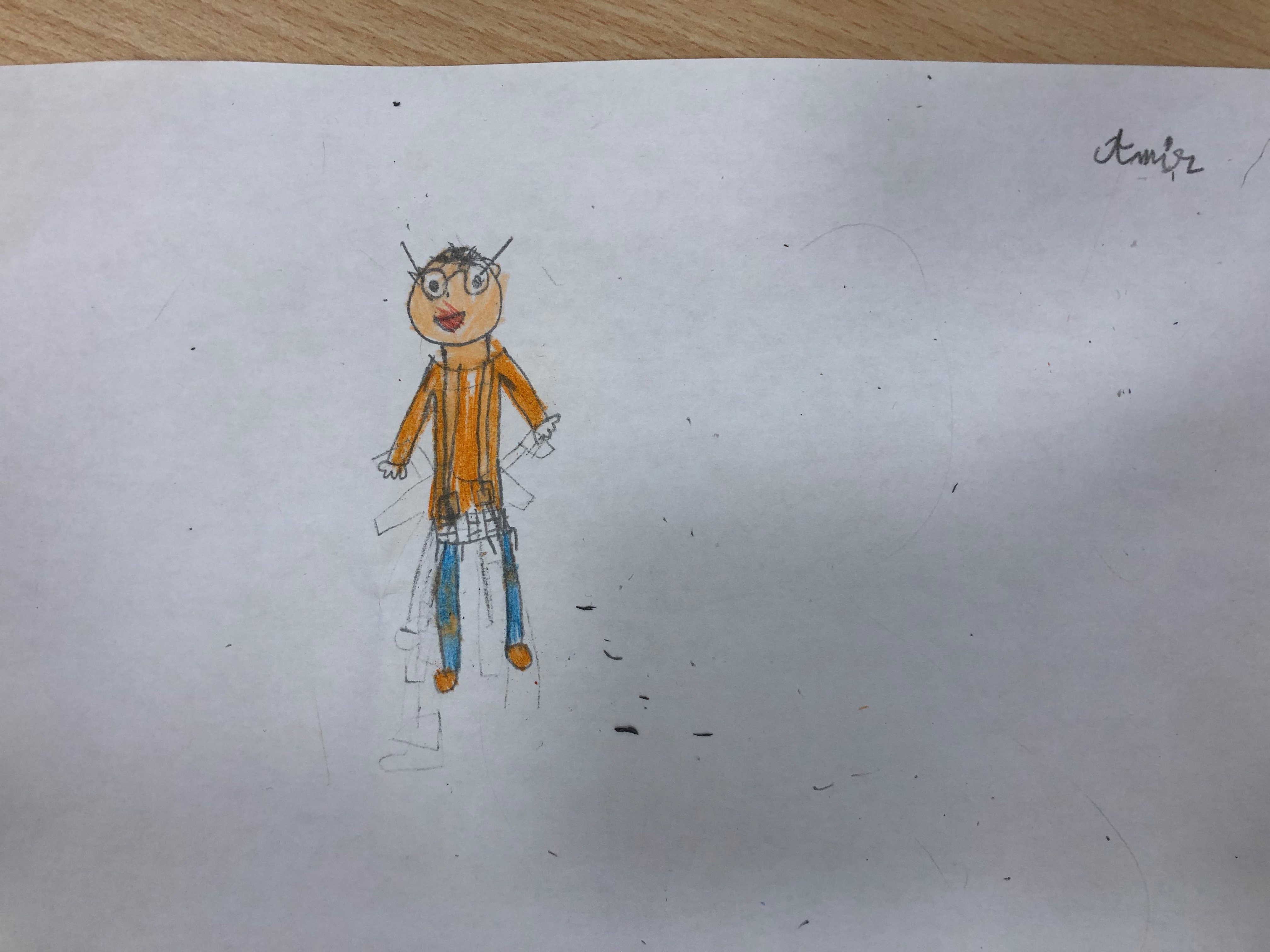

A selection of Chinese children’s self-portraits
来自中国学生的部分自画像作品


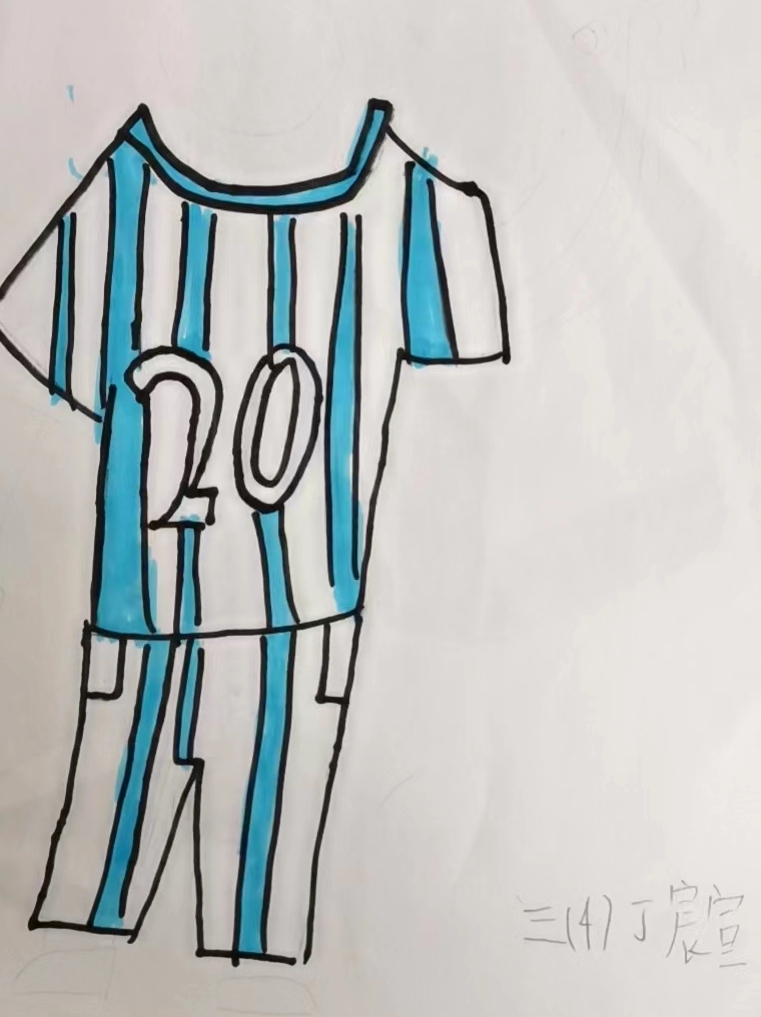
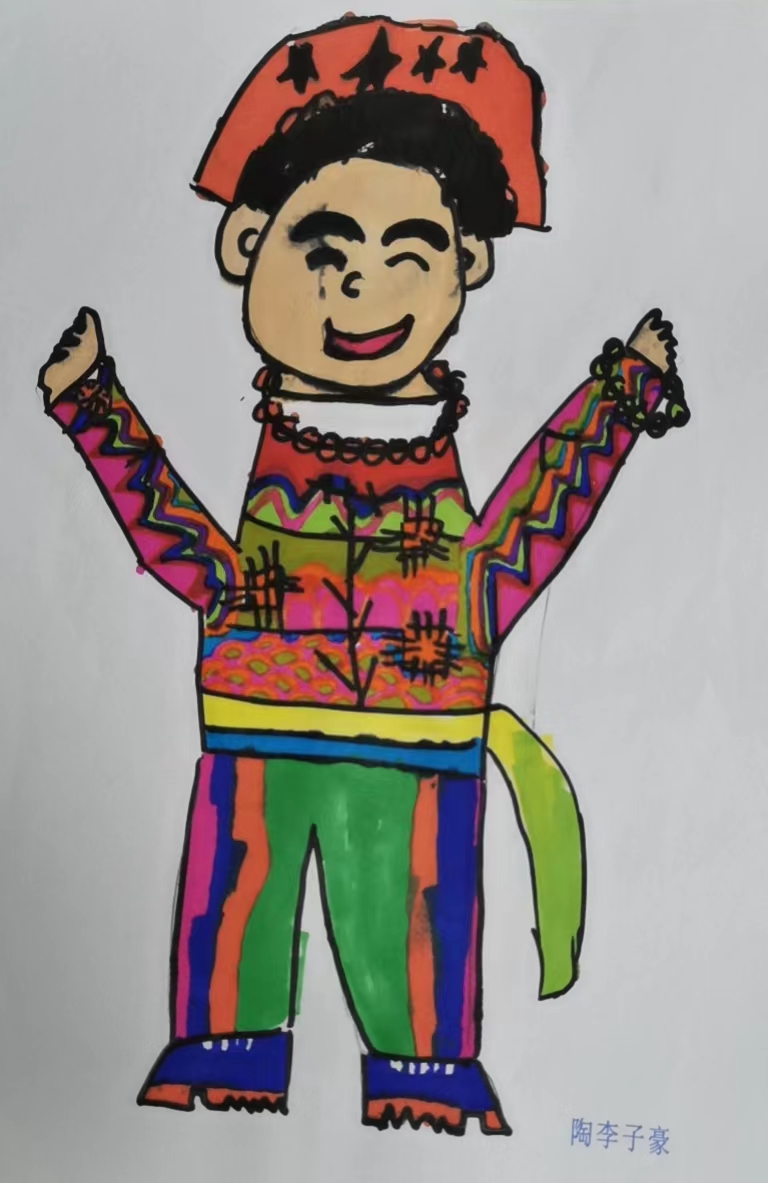
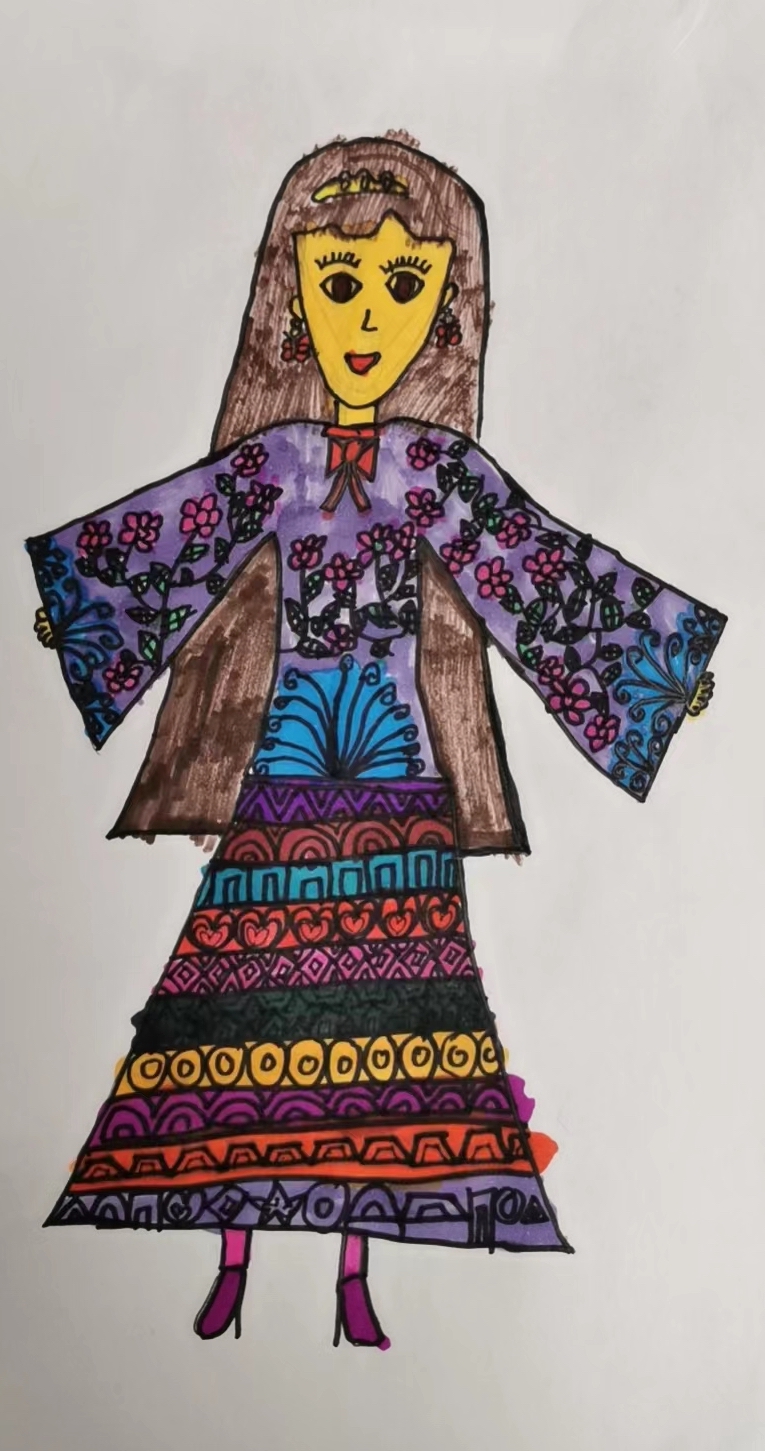
Theme 2 – What will you take in your suitcase?
题⽬1 – 我的法国参展之旅⾏李箱。
A selection of creations of French children
来自法国学生的部分自画像作品


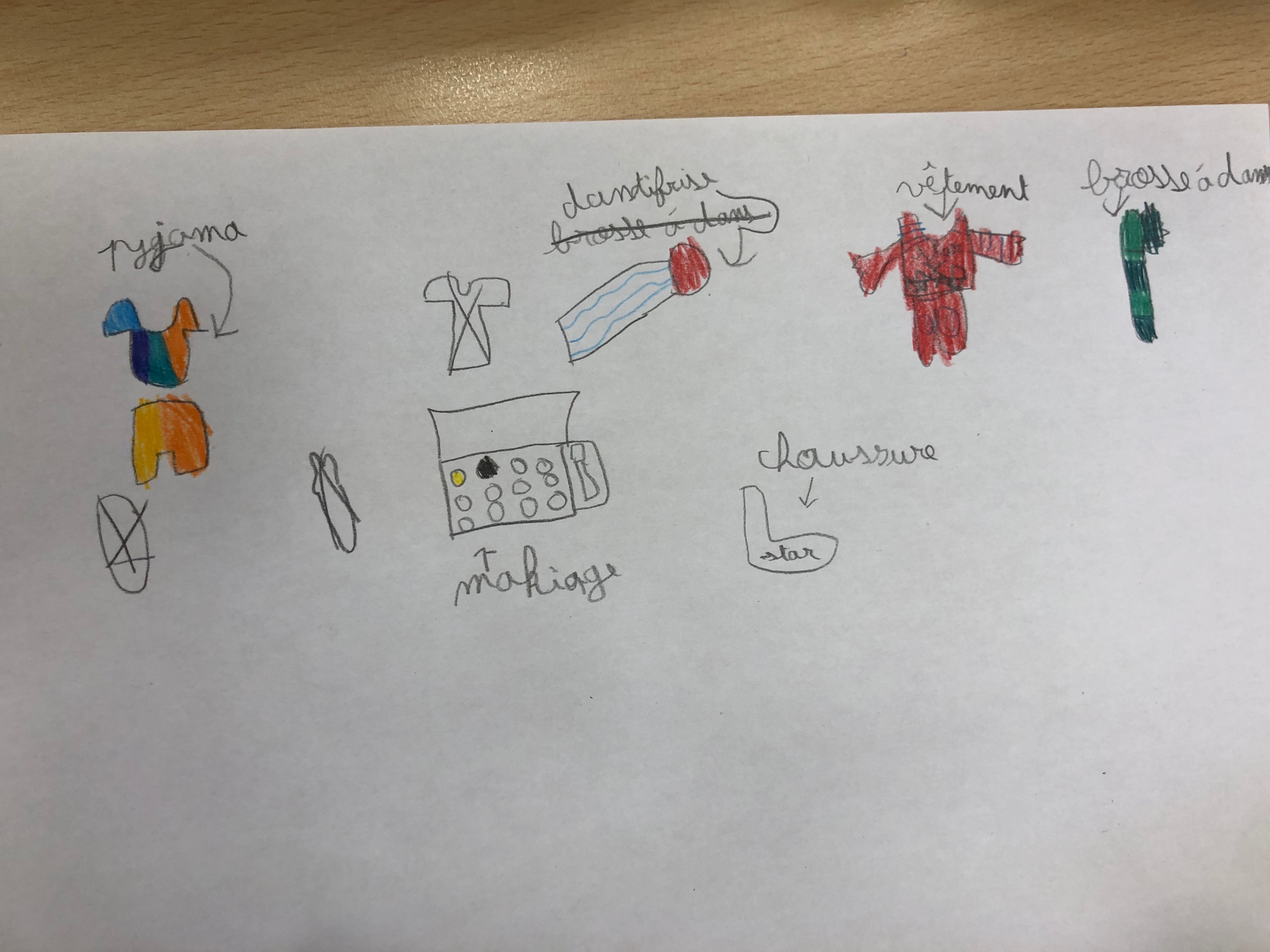
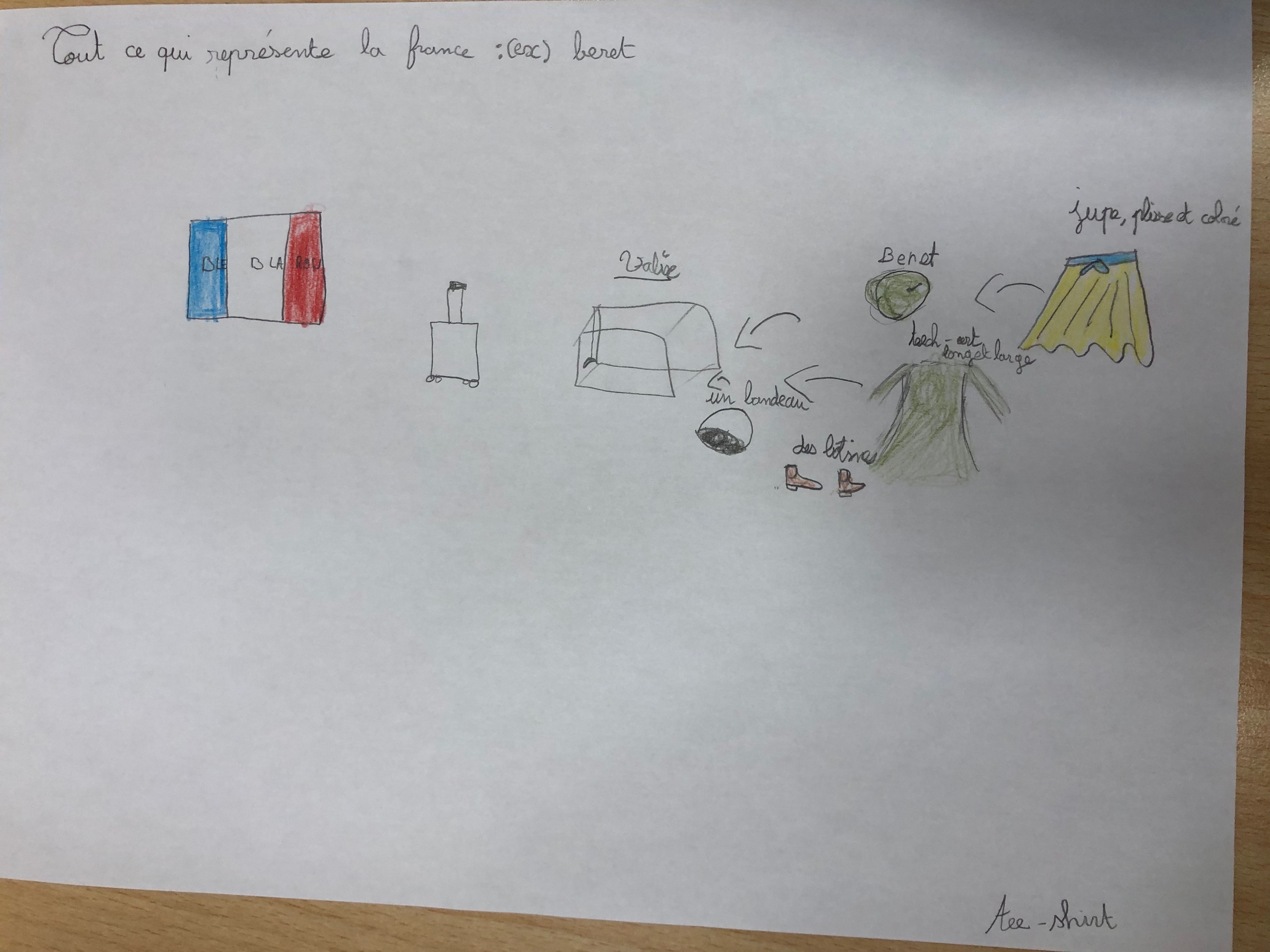


A selection of Chinese children’s creations
来自中国学生的部分自画像作品
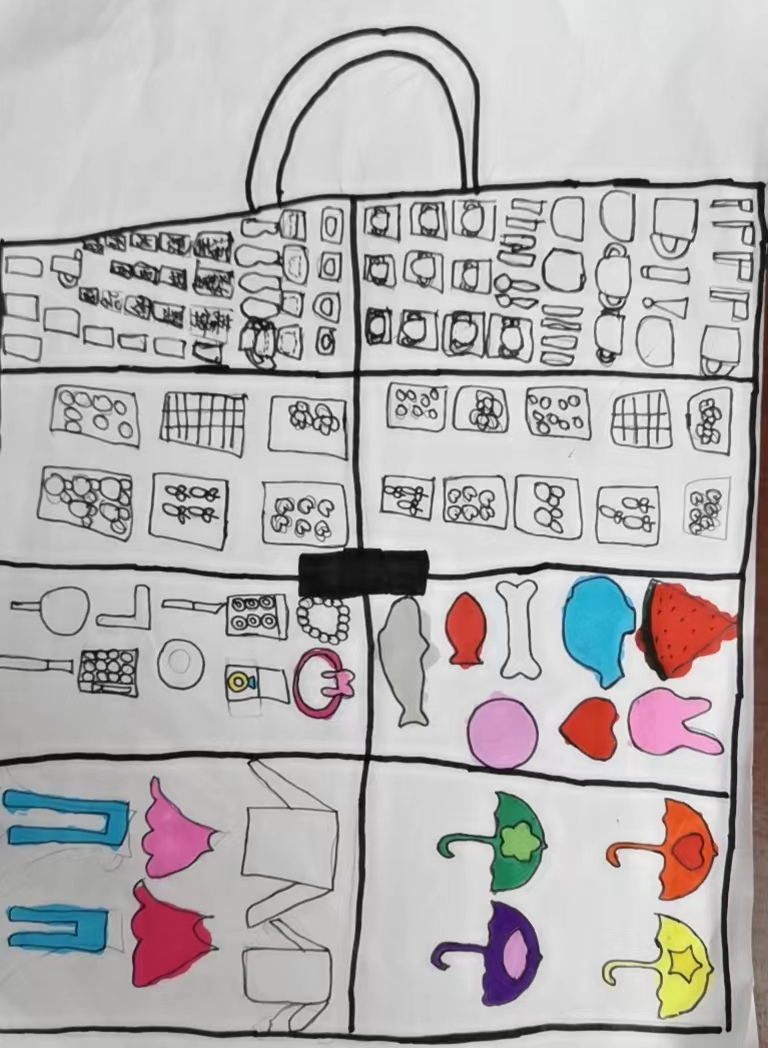



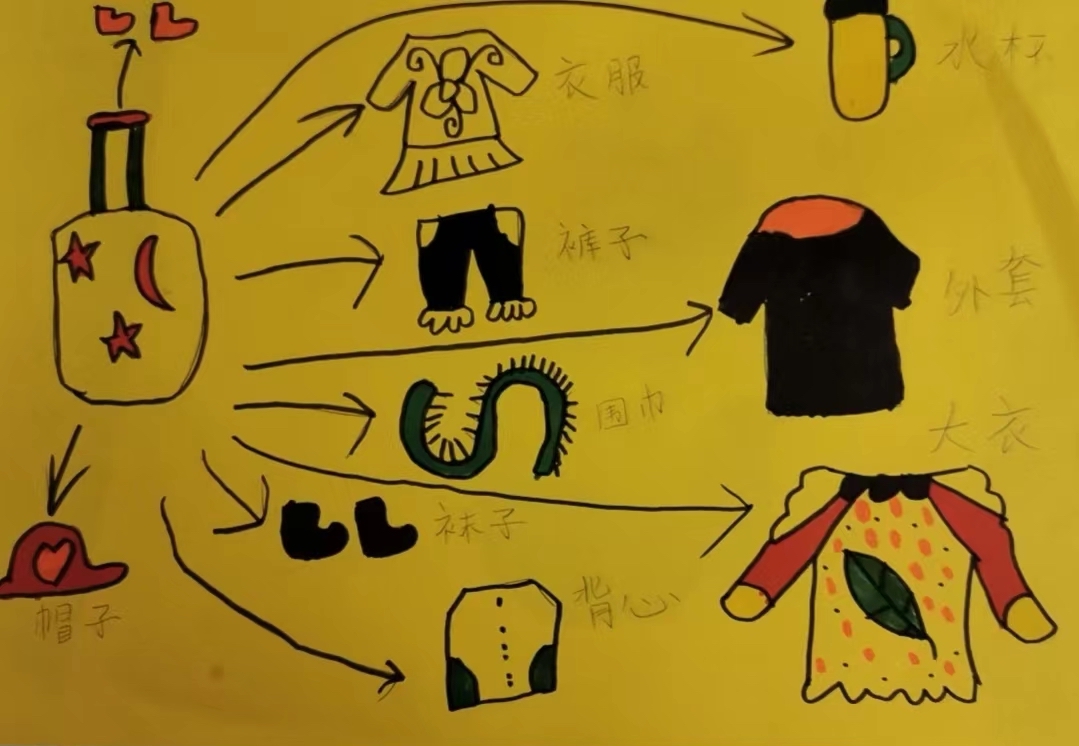
What children teach us: the creativity of the dress codes which is expressed in colours, shapes and patterns, is an extension of one’s personality and invites itself into the exceptional moments of our lives.
孩子告诉我们:不同的颜⾊、形状和图案构成了我们平时的着装,我们穿着各式各样
的⾐服出席⼈⽣的不同阶段,所穿服装也代表着每个⼈个性的延伸。
Conclusion – 结论

This second opus of “Tell me” invited the children to an exchange in which neither the language nor the lifestyles of their “Clothing friends” were completely familiar to them. Beyond preconceived ideas, questions about clothing practices allowed them to unfold reasoning, and to forge links between their groups separated by several thousand of km. Following the ideas and intuitions of the children, “Tell me 2” saw changes in the classrooms, with the magic of a movement of the tables and gathering of children in small groups. Questions about living together, respective cultures and socio-political contexts were asked in each group, and solicited answers from adult facilitators. Beyond words, over the course of the workshops, the drawings, collages and designs of costumes revealed to the children a diversity of artistic practices and the resources of textile materials to describe their clothes. They also inform us about the way in which their perception of otherness is forged through codes of representation learned from an early age taking clothing as a medium. Children are curious to question these styles, to celebrate them and to immerse themselves in their clothing environment to better appropriate the society. They also have the curiosity to question the origins of the raw materials, and to understand the manufacturing techniques. Clearly, the children question “clothes” as objects, to get to know it better and redefine its use.
“Tell me 2” allowed to go further in our understanding of the way children interpret their clothes, and how clothing can become an immensely resourceful teaching tool. The workshops led the children towards multiple exploratory paths, which surprised the adults and on more than one occasion, reversed the learning postures. The data from this experience are analysed and lead towards recommendations for adults, parents, teachers, policy makers and the industry wishing to create an inclusive material culture for children and to place clothing at the heart of children’s learning.
结论:
“Tell me 2”邀请了中国和法国的孩⼦们进⾏交流。由于中法的孩⼦对彼此的语⾔和⽣ 活⽅式完全不熟悉,所以我们利⽤了服装作为媒介辅助及促进双⽅的沟通。除了讨论 些我们预先准备的问题外,孩⼦们围绕着关于穿着习惯的话题展开了延展讨论,⼀颗 颗好奇的⼼将相隔数千公⾥的彼此紧紧联系在⼀起。
完全尊从孩⼦们的想法和创作直觉,“Tell me 2”观察到了孩⼦为了创作课题⽽变更了教室⾥的桌椅陈列,主动聚集成⼩组合作的有趣⾏为。双⽅的学⽣都好奇地询问了关于彼此学习⽣活、对⽅⽂化和社会政治的问题,并通过⼯作坊协调员得到了答案。除了问答交流环节之外,在⼯作坊课程中,绘画、剪贴艺术和服装设计向孩⼦们展⽰了艺术实践的多样性,还有学习了可以⽤于描述他们服饰的不同纺织布料。
我们从这⼀系列的⼯作坊中惊奇地了解到孩⼦们是如何以服装为媒介来塑造他们对其他⼈的看法。孩⼦们好奇、欣赏并且接受各式各样的服装风格,让⾃⼰更好地适应这个多姿多彩的社会。 孩⼦们也好奇他们⽇⽇所穿的⾐物的材料从何⽽来;以及服装的制造技术。显然,“⾐服”对于孩⼦不仅仅只是⾐物,他们重新定义它的⽤途,他们透过⾐服向世界提问⼀切问题。
“Tell me 2”项⽬帮助我们进⼀步地了解孩⼦们如何理解他们的⾐服,以及⾐服如何成为⼀种有⼒且新颖的教学媒介。这⼀系列的⼯作坊课程颠覆传统的教学模式,从⼏个意想不到的⽅向带领孩⼦们探索了不同⽅⾯的知识。该项⽬将会为致⼒于向⼉童传授包容性物质⽂化和服装知识的群体、家⻓、教师、政策制定者和相关⾏业提供数据分析结果以及经验建议。
